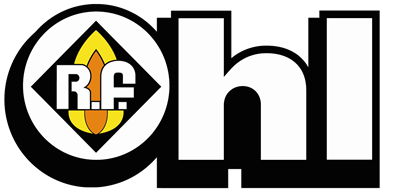Heat Pumps: All You Need To Know, Advice From Poconos HVAC Contractor
A heat pump is essentially a mechanical-compression cyclical refrigeration system. The system can be used for either cooling or heating a controlled space. Typically, installation is a two-process. There is an air handler, which is an indoor unit and an outdoor unit comparable to an air conditioning unit.
Where heat pumps are concerned, freezers and air conditioners are familiar examples. However, heat pump is a term more generally used and it applies to various heating, ventilating, and air conditioning (HVAC) devices.
When used for heating, a heat pump utilizes the same basic type of cycle used by a refrigerator or an air conditioner. However, it operates in the opposite direction by emitting heat into a conditioned space, instead of in a surrounding environment. Typically, heat pumps pull heat from the ground or cooler outside air. When compared to simple electrical resistance heaters, heat pumps are between 3 and 4 times more efficient in using electricity.
How A Heat Pump Works
 A heat pump can be viewed as a heat transporter that moves warm air constantly from one place to the next. Depending on the season, warm air is moved to where it is needed or from where it is not needed. When the temperature is cold, heat is extracted by the heat pump and transferred inside. The direction is reversed when it is warm outside; it functions similarly to an air conditioner by eliminating heat.
A heat pump can be viewed as a heat transporter that moves warm air constantly from one place to the next. Depending on the season, warm air is moved to where it is needed or from where it is not needed. When the temperature is cold, heat is extracted by the heat pump and transferred inside. The direction is reversed when it is warm outside; it functions similarly to an air conditioner by eliminating heat.
Principles of Operation
The physical properties of an unstable condensing and evaporating fluid called a refrigerant are exploited by mechanical heat pumps. The refrigerant is compressed by the heat pump to make it hotter. The pressure is then released at the side where heat absorption takes place.
In its gaseous state, a compressor pressurizes the working fluid and moves it through the system. On the side of the compressor where discharges occur, the now highly pressurized and hot vapor is cooled in a condenser, which is basically a heat exchanger. This is done until it becomes condensed into a moderate-temperature, high-pressure liquid. Following this, the condensed refrigerant flows through a metering device that is also known as a pressure-lowering device.
This could be capillary tube, an expansion valve or a turbine or other work-extracting devices. After which, the low-pressure liquid refrigerant goes into the evaporator; this is another heat exchanger. In the evaporator, the fluid boils and absorbs heat. This is followed by the refrigerant returning to the compressor for a repeat of the cycle.
When compressed, it is vital that the refrigerant gets to an adequately high temperature. This is necessary to ensure the release of the heat through the condenser. Likewise, the fluid has to get to an adequately low temperature when expansion is allowed. If this is not done, heat will not stream to the evaporator from the ambient cold area.
One of the main advantages of a heat pump is its capacity to move heat rather than generate it. This makes it more energy efficient. Additionally, electricity powers the heat pump; therefore, you can save significantly on the consumption of fuel.
Troubleshooting A Heat Pump
R.F. Ohl specializes in keeping your house warm and comfortable even when it is bitter cold outside. If you believe that your heat pump is having problems or you have any questions regarding your HVAC system, we will gladly address them for you. We service Carbon County, Monroe County, Lehigh County, Northampton County, and Schuylkill County. Keep warm this winter by calling us and speaking with a live representative 24/7.
Contact us today or give us a call at (610) 377-1098 if you have any questions.
